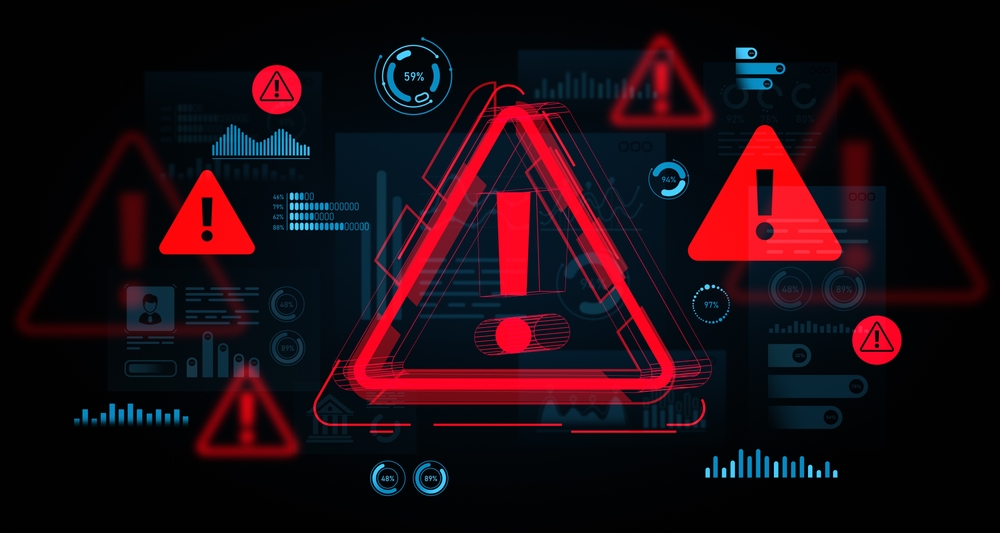The Evidence Ledger
Red Flags Checklist: 25 Warning Signs of Financial Fraud Every Investigator Should Know

Financial fraud investigations are high-stakes endeavors where the difference between success and failure often lies in recognizing critical warning signs early. While fraudsters continue to evolve their tactics, certain red flags remain consistent across industries and schemes. This comprehensive checklist provides forensic accountants, investigators, and financial professionals with 25 essential warning signs that should trigger immediate scrutiny.
The Cost of Missing Red Flags
Before diving into specific indicators, it's crucial to understand what's at stake. The Association of Certified Fraud Examiners (ACFE) reports that organizations lose an estimated 5% of their annual revenue to fraud—approximately $4.7 trillion globally. More alarming is the fact that the median duration of fraud schemes is 12 months before detection, with some persisting for years.
Bottom Line Up Front: Early detection through systematic red flag monitoring can reduce losses by up to 60% and significantly improve recovery rates. The warning signs below are your first line of defense.
Behavioral and Environmental Red Flags
1. Lifestyle Beyond Means
Employees displaying wealth inconsistent with their known income—luxury cars, expensive vacations, or designer clothing—without obvious alternative income sources.
2. Reluctance to Share Duties
Individuals who refuse to take vacations, work excessive hours, or resist having others handle their responsibilities may be concealing fraudulent activity.
3. Defensive Behavior About Procedures
Excessive defensiveness when questioned about transactions, processes, or documentation can indicate attempts to hide wrongdoing.
4. Unusual Working Hours
Employees frequently working alone after hours or during weekends, especially in areas with access to financial systems or cash.
5. Close Relationships with Vendors
Unusually close personal relationships between employees and suppliers, contractors, or customers that could facilitate kickback schemes.
Financial Statement Red Flags
6. Inconsistent Financial Trends
Revenue or expense patterns that don't align with industry benchmarks, economic conditions, or the company's operational reality.
7. Last-Minute Adjustments
Significant journal entries made at period-end, especially those that improve financial performance or ratios.
8. Revenue Recognition Anomalies
Unusual timing of revenue recognition, such as recording sales before delivery or recognizing revenue from related parties.
9. Expense Manipulation
Capitalizing expenses that should be expensed, or delaying recognition of legitimate expenses to inflate current period profits.
10. Complex Transactions Near Period-End
Sophisticated or unusual transactions completed just before reporting deadlines, particularly those involving related parties.
Banking and Cash Flow Red Flags
11. Unusual Bank Account Activity
Frequent transfers between accounts, especially to accounts in different jurisdictions or under different names.
“Criminals don’t want you to see the pattern. The movement is obfuscated, layered, and deliberately messy. If you don’t have the right tools to surface those patterns, you’re stuck staring at a pile of transactions and hoping something jumps out. That’s not a strategy.”
- David Tyree, Valid8 Senior Advisor and retired DEA agent
12. Cash Transactions Above Normal Patterns
Significant increases in cash deposits or withdrawals that don't match the business's typical operations.
13. Reconciliation Discrepancies
Persistent or unexplained differences between book balances and bank statements.
“In one case, I thought I had everything. Valid8 flagged a missing page. Turns out it was a key withdrawal that tied two accounts together. Without it, the case would've had a gaping hole.”
- David Tyree, Valid8 Senior Advisor and retired DEA agent
14. Missing Supporting Documentation
Transactions lacking proper supporting documentation, or documents that appear altered or fabricated.
“Those details matter in court. If you miss a page or fail to spot a duplicate, it opens the door for reasonable doubt.”
- David Tyree, Valid8 Senior Advisor and retired DEA agent
15. Round-Number Transactions
Frequent transactions in round numbers (e.g., $10,000, $50,000) which may indicate manufactured or fictitious entries.
Vendor and Procurement Red Flags
16. Duplicate Invoices
Multiple invoices with similar amounts, descriptions, or vendor information that could indicate payment manipulation.
17. Vendor Address Anomalies
Vendors with addresses matching employee addresses, P.O. boxes, or residential locations for business services.
“One guy ran a fake wholesale food company—he’d take restaurant checks funded with drug cash and mix in legitimate checks. I raided that place: there were products on shelves, but no prices, no register, and millions in cash deposits.”
- David Tyree, Valid8 Senior Advisor and retired DEA agent
18. Sole-Source Procurement
Consistent awards to single vendors without competitive bidding, especially for services that should have multiple qualified providers.
19. Invoice Irregularities
Invoices lacking proper vendor information, missing sequential numbering, or containing unusual formatting or descriptions.
20. Vendor Payment Patterns
Payments to vendors that significantly exceed industry standards or historical patterns without clear justification.
Internal Control Red Flags
21. Weak Segregation of Duties
Single individuals having control over multiple aspects of financial processes (authorization, recording, and custody).
22. Missing Audit Trails
Transactions that cannot be traced through the accounting system or lack proper documentation chains.
23. System Access Violations
Employees with system access beyond their job requirements, or evidence of unauthorized system access.
24. Override of Controls
Frequent management overrides of established controls, or controls that appear to exist on paper but aren't enforced.
“Fraudsters count on people trusting them... When someone regularly overrides internal controls, it’s not just a red flag—it’s a siren.”
- David Tyree, Valid8 Senior Advisor and retired DEA agent
25. Rapid Organizational Changes
Sudden changes in key personnel, especially in financial roles, or high turnover in departments handling money.
Industry-Specific Considerations
Different industries face unique fraud risks that require specialized attention:
Healthcare: Focus on billing irregularities, phantom patients, and unusual procedure coding patterns.
Construction: Watch for change order manipulation, material diversion, and subcontractor kickbacks.
Financial Services: Monitor for unauthorized trading, account manipulation, and money laundering indicators.
Government: Scrutinize procurement processes, grant compliance, and expense reimbursement patterns.
Technology-Enhanced Red Flag Detection
Modern fraud analysis increasingly relies on technology to identify patterns human reviewers might miss manually:
- Data analytics tools can identify statistical irregularities in transaction patterns
- AI-powered systems excel at detecting unusual vendor relationships and payment patterns
- Automated reconciliation platforms can flag discrepancies in real-time
- Transaction visualizations can reveal layered transfers and unusual financial flows that may signal attempts to obscure movement of funds.
Valid8's Verified Financial Intelligence platform, for example, automatically flags many of these discrepancies and provides visibility into others, enabling investigators to focus on the most promising leads rather than manually sifting through thousands of transactions.
Red Flag Assessment Framework
Not all red flags carry equal weight. Use this framework to prioritize your investigation:
High Priority (Immediate Investigation Required):
- Missing documentation for significant transactions
- Lifestyle inconsistent with income
- Unusual transactions near period-end
- Vendor address anomalies
Medium Priority (Requires Monitoring):
- Defensive behavior about procedures
- Frequent system access outside normal hours
- Reconciliation discrepancies
- Round-number transactions
Low Priority (Watch for Patterns):
- Minor procedural violations
- Occasional late submissions
- Non-critical system access irregularities
Building a Systematic Approach
Effective red flag detection requires systematic implementation:
- Establish Baseline Patterns: Understand normal business operations to identify deviations
- Create Monitoring Systems: Implement automated alerts for high-risk indicators
- Ensure Segregation of Duties (SoD): Separate financial responsibilities to avoid conflicts of interest—for example, the person managing accounts payable should not be the same person reviewing vendor contracts or monitoring P&L activity. This creates necessary checks and balances across the team.
- Train Your Team: Ensure all relevant personnel can recognize and report suspicious activity
- Document Everything: Maintain detailed records of red flag observations and investigations
- Regular Review: Periodically assess and update your red flag criteria based on emerging threats
The Human Element
While technology enhances detection capabilities, human judgment remains crucial. The most sophisticated fraud schemes often involve social engineering and manipulation that only experienced investigators can recognize. Combining technological tools with skilled human analysis provides the strongest defense against financial fraud. As former DEA Special Agent David Tyree often notes, “The biggest frauds aren’t always the most complex—they’re just the ones people stopped questioning.”
Taking Action
Recognizing red flags is only the first step. When multiple indicators align, swift action is essential:
- Document observations immediately while details are fresh
- Preserve evidence before it can be altered or destroyed
- Engage specialized resources like forensic accountants or fraud investigators
- Consider legal implications and coordinate with appropriate counsel
- Implement immediate controls to prevent further losses
Red Flags are Only the Beginning
Financial fraud detection is an ongoing battle requiring vigilance, expertise, and the right tools. These 25 red flags represent time-tested indicators that have helped investigators uncover billions in fraudulent activity. However, fraudsters continuously adapt their methods, making it essential to stay current with emerging threats and detection techniques.
The key to successful fraud investigation lies not just in recognizing individual red flags, but in understanding how they interconnect to form patterns of suspicious activity. By combining systematic red flag monitoring with advanced analytical tools and experienced professional judgment, investigators can significantly improve their success rates in detecting and preventing financial fraud.
Remember: in fraud investigation, paranoia is a professional virtue. When multiple red flags align, trust your instincts and investigate thoroughly. The cost of missing fraud far exceeds the investment in proper detection and prevention systems. Valid8’s Verified Financial Intelligence platform equips forensic accountants and investigators with the tools to surface hidden patterns, streamline data review, and build defensible narratives. Ready to upgrade your investigative approach? Contact us today to see how Valid8 can support your next case.



















